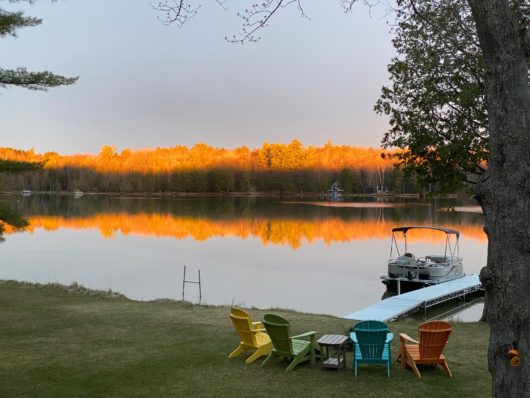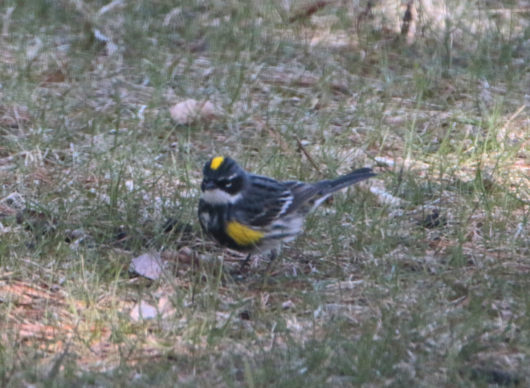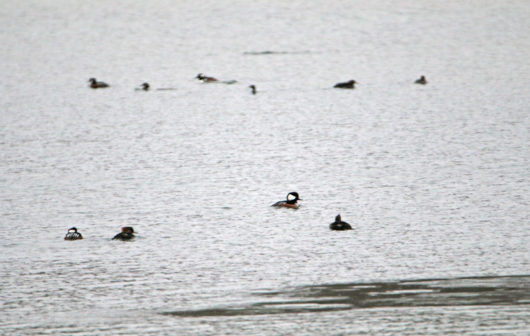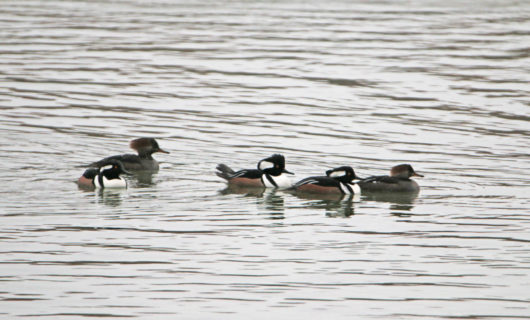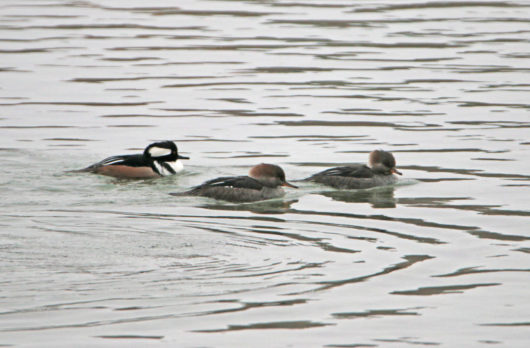
This place is a little strange. Not really a dam’s normal fish ladder. It’s an architect’s vision of a fish ladder. A stark and brutalist vision though.
Joseph E. Kinnebrew (the IV, to distinguish him from his three ancestors of the same name) is the architect who designed this “sculpture and fish ladder” for the Grand River as it flows through the heart of downtown Grand Rapids, Michigan. It was dedicated not quite 50 years ago, on June 6, 1975.

Seems to me like Joe struggled some to capture “the aesthetic significance of our environment.” But maybe not. I am no proper art critic. And I definitely totally enjoyed seeing the ladder sculpture and the river that runs through it.

Salmon, steelhead, and brown trout use the ladder regularly in the fall and into the winter. The height of the dam means they can’t get to their spawning spots upriver when the time is right. So they need a boost from the humans who set up the obstructive dam in the first place.

There’s been a push locally to return the river to itself–minus the dam–but that’s a tough sell.
Fall fishing can be really good at the dam and near the ladder. Maybe a fisherman needs to keep a lookout that one of those big logs doesn’t dislodge though.

We didn’t see much being caught. But we did see a few fish get hooked and manage to outsmart the humans.

This guy reeled in a pretty big one while we watched.

The cormorants were watching too.

The mallards though? They were disinterested in the hullabaloo and just dabbled around in the shallows.

The giant soap bubbles at the river’s edge didn’t pop.
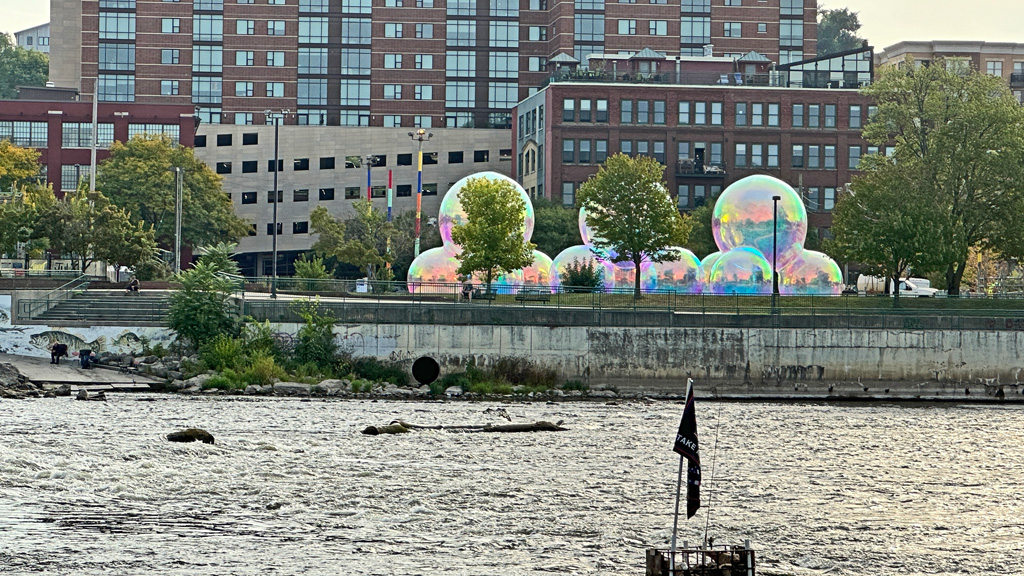
You probably would like a closer look at those.

The giant bubbles are “Evanescent” by Atelier Sisu. The installation was part of GR’s Art Prize 2023. This city is a more cool place than uncool me deserves to be hanging out in. Cormorants, big fish, and giant soap bubbles. What an unlikely combination.
Check out these You Tube videos if you want to see fish actually running the fish ladder and drone shots of the dam area.

